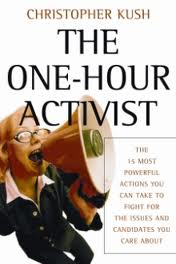How one donor achieved impact beyond check-writing
 “Philanthropy is neither a solitary effort by the donor nor even a dialectical effort between the donor and the grantee. Social change involves many different players from all sectors of society. It is through the engagement and alignment of these multiple players that catalytic donors achieve their impact.”
“Philanthropy is neither a solitary effort by the donor nor even a dialectical effort between the donor and the grantee. Social change involves many different players from all sectors of society. It is through the engagement and alignment of these multiple players that catalytic donors achieve their impact.”
A best practice worth repeating
I recently taught a philanthropy class where we discussed the merits of this sentiment published in Crutchfield, Kania and Kramer’s book, Do More Than Give: The Six Practices of Donors Who Change the World. While this book has been widely discussed since it was published in 2011, revisiting it with my class reminded me that the principles are as relevant today as they were four years ago microsoft office word 2007 kostenlos herunterladen. I have a renewed appreciation for some of the case stories that illustrate what it means to be a catalytic donor so I’d like to return to one of the authors’ great profiles about a donor by the name of Emily Jackson Tow.
Jackson Tow is an example of what the authors call an adaptive leader or someone who fully evaluates the issue and hand and determines how she can facilitate transformative change beyond funding. These adaptive donors “are not content to merely give a man a fish, or even teach him to fish; these entrepreneurs won’t stop until they’ve revolutionized the entire fishing industry,” says Ashoka founder Bill Drayton herunterladen. In this particular case, Jackson Tow demonstrates the first of the six highlighted best practices in the book: advocate for change.
give a man a fish, or even teach him to fish; these entrepreneurs won’t stop until they’ve revolutionized the entire fishing industry,” says Ashoka founder Bill Drayton herunterladen. In this particular case, Jackson Tow demonstrates the first of the six highlighted best practices in the book: advocate for change.
How Emily Jackson Tow advocated for change
The authors highlight the Tow Foundation’s advocacy efforts to demonstrate the power of a donor’s influence beyond financial impact. The Tow Foundation maintains a portfolio approach to giving, but its greatest impact comes from its nonfinancial contributions, such as sweat equity, knowledge of best practices, national and local networks, relationships and perseverance to reform the state’s juvenile justice system.
Emily Tow Jackson became aware of a class action lawsuit filed on behalf of adolescents who were jailed for minor offenses, such as graffiti, in the same facility as serious offenders and confined to small, poorly ventilated cells for up to 21-hour stretches with two inmates and no toilet wiso elster steuerbescheid herunterladen. Beyond the horrible conditions, the larger issue was Connecticut’s escalating youth imprisonment rates. Many of the juvenile offenders did not require high-security prison facilities; rather they needed counseling, safe and stable homes, and other basics.
with two inmates and no toilet wiso elster steuerbescheid herunterladen. Beyond the horrible conditions, the larger issue was Connecticut’s escalating youth imprisonment rates. Many of the juvenile offenders did not require high-security prison facilities; rather they needed counseling, safe and stable homes, and other basics.
Tow Jackson immediately set to work by enlisting three nonprofit organizations to establish the Connecticut Juvenile Justice Alliance with a start-up grant of $25,000. Additionally, the foundation engaged in advocacy activities that included the following:
– funding and participating in collaborations,
– educating legislators with forums at the state capitol,
– participating on local and state government committees,
– raising public awareness through media,
– and giving general operating support to nonprofits focused on this issue ebooks aus der cloud herunterladen.
By 2009, referrals to juvenile court dropped by more than one third and the number of youth convictions dropped by almost two thirds. At the time the Do More Than Give was published, Connecticut was recognized nationally as an innovative leader in handling juvenile cases, rather than as a leading incarcerator of minors.
Nuances of advocacy
The authors explain an important piece about this best practice: Some funders avoid lobbying because of a fear or misunderstanding of how much lobbying is allowed, so the authors define advocacy and related terms as:
– Advocacy refers to activism around an issue such as climate change, free trade or youth justice herunterladen. Examples of activities range from educating and mobilizing voters to pitching media stories and raising awareness to directly influencing public officials.
– Policy advocacy (a.k.a. lobbying) refers to specific efforts to change public policy or obtain government funding for a social program.
– Lobbying versus advocacy: Most of the confusion lies with advocacy sims 4 gratis herunterladen pc. Lobbying is prohibited by foundations in the U.S. and advocacy is an all-encompassing term for a whole range of activities.
Private foundations, which include most family foundations, cannot fund or engage in direct lobbying, but they can make general operating grants to nonprofits that lobby. Large private foundations have a long political history because they generally have a larger staff of trained professionals who have a deep understanding of the issues and social sector.
Conversely, public foundations, such as community foundations are allowed both to engage in lobbying themselves and to fund nonprofits that lobby netflix serieen kosten. Because community foundations find themselves at the center of many different stakeholders, most shy away from lobbying. However, the authors explore a case study about The New Hampshire Charitable Foundation and how it successfully positioned its lobbying activities so its constituents would embrace them.
– Corporate foundation lobbying: Good corporate foundations reconcile lobbying activities that benefit their company with those that lend strength to the social causes they support for a win-win. Corporations can leverage vast brand recognition and marketing channels to broadcast policy messages and they can mobilize entire industries. In contrast, some companies still support legislation that directly contradicts their socially responsible images pictures instagram. For example, Toyota, maker of the eco-friendly Prius, lobbied with other carmakers against tougher fuel economy standards.
Working together for maximum impact
To create systemic change, nonprofits today need catalytic donors in their court to leverage the full participation of every sector in society. According to the authors, the number of billionaires has tripled since 2000 and nearly half of the 75,000 private foundations established in the U.S. were created in the last decade. We’re also seeing growth in private enterprise where new corporate entities are created to blend profit with social purpose, as well as in government’s willingness to partner in nonconventional ways magenta sport app herunterladen.
Within the context of these societal trends, there is no question that donors are positioned like never before to help orchestrate an integrated approach to problems and embrace catalytic philanthropy. Visit the Do More Than Give website for more stories about donors who create catalytic change in their communities.
See also:
Fail Better: Design Smart Mistakes and Succeed Sooner
Mission-Based Management: Leading Your Not-for-Profit in the 21st Century, 3rd Ed herunterladen.
The Ask: How to Ask for Support for Your Nonprofit Cause, Creative Project or Business Venture
Image credits: ask.com, towfoundation.org, stlucianewsonline.com, parksandrecreation.com


























